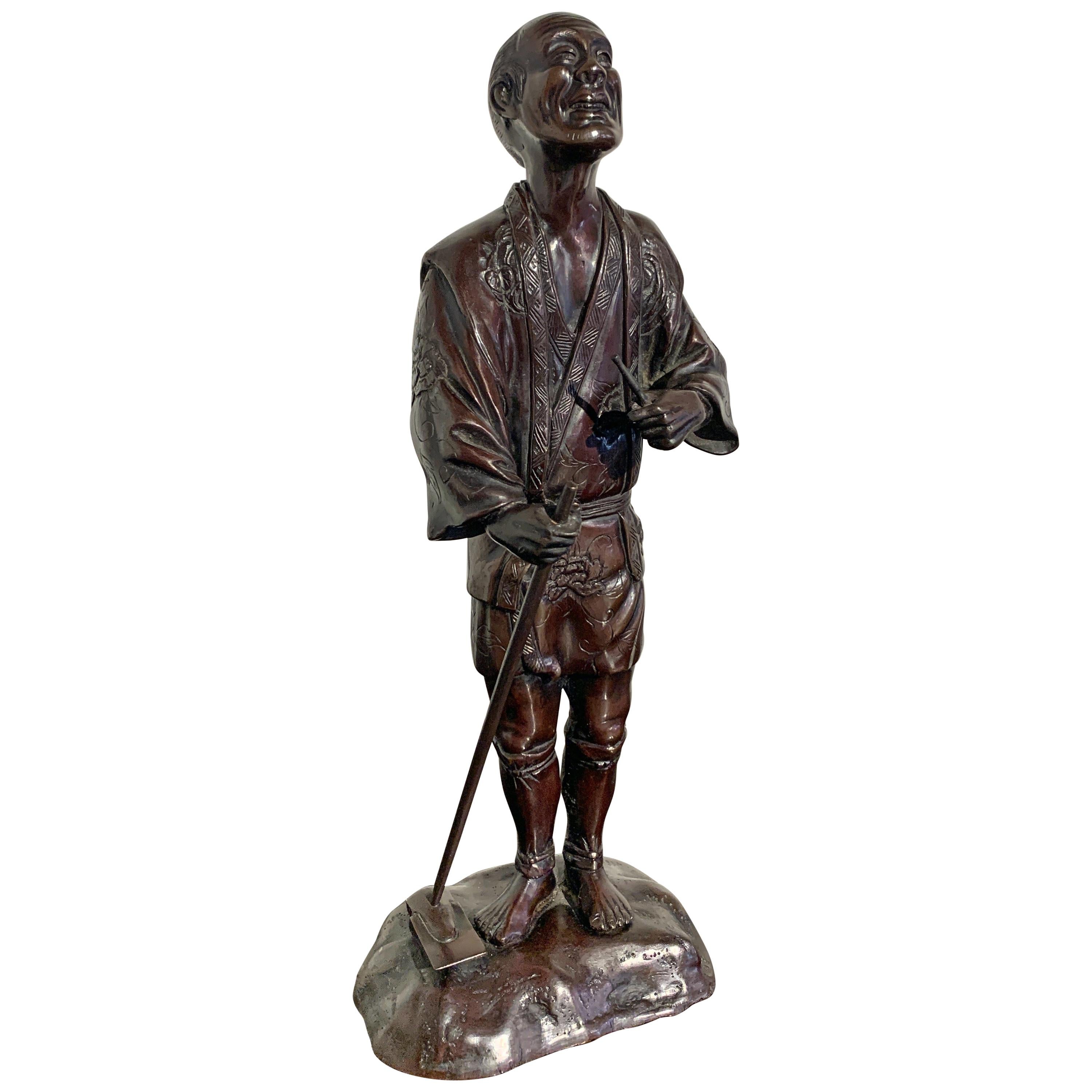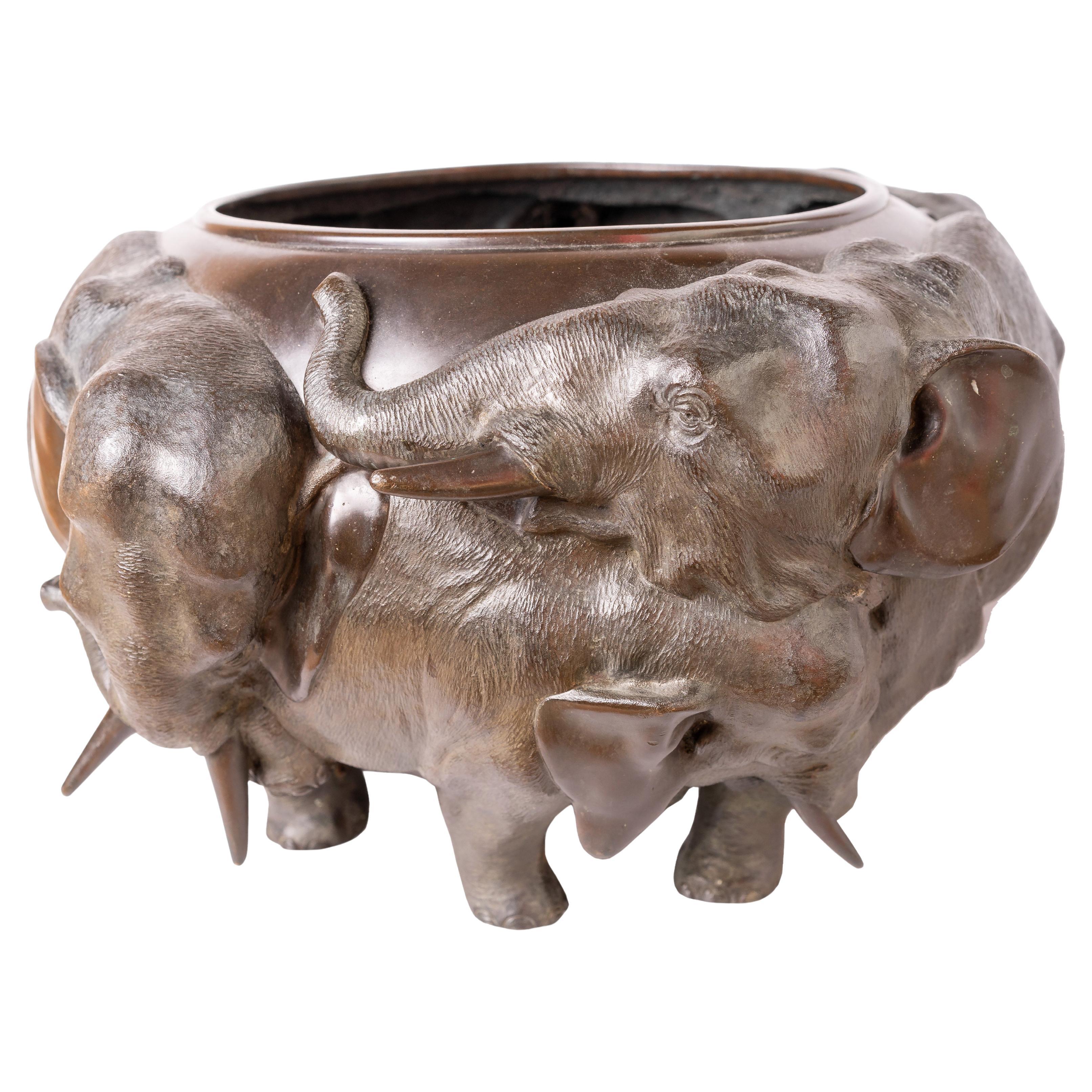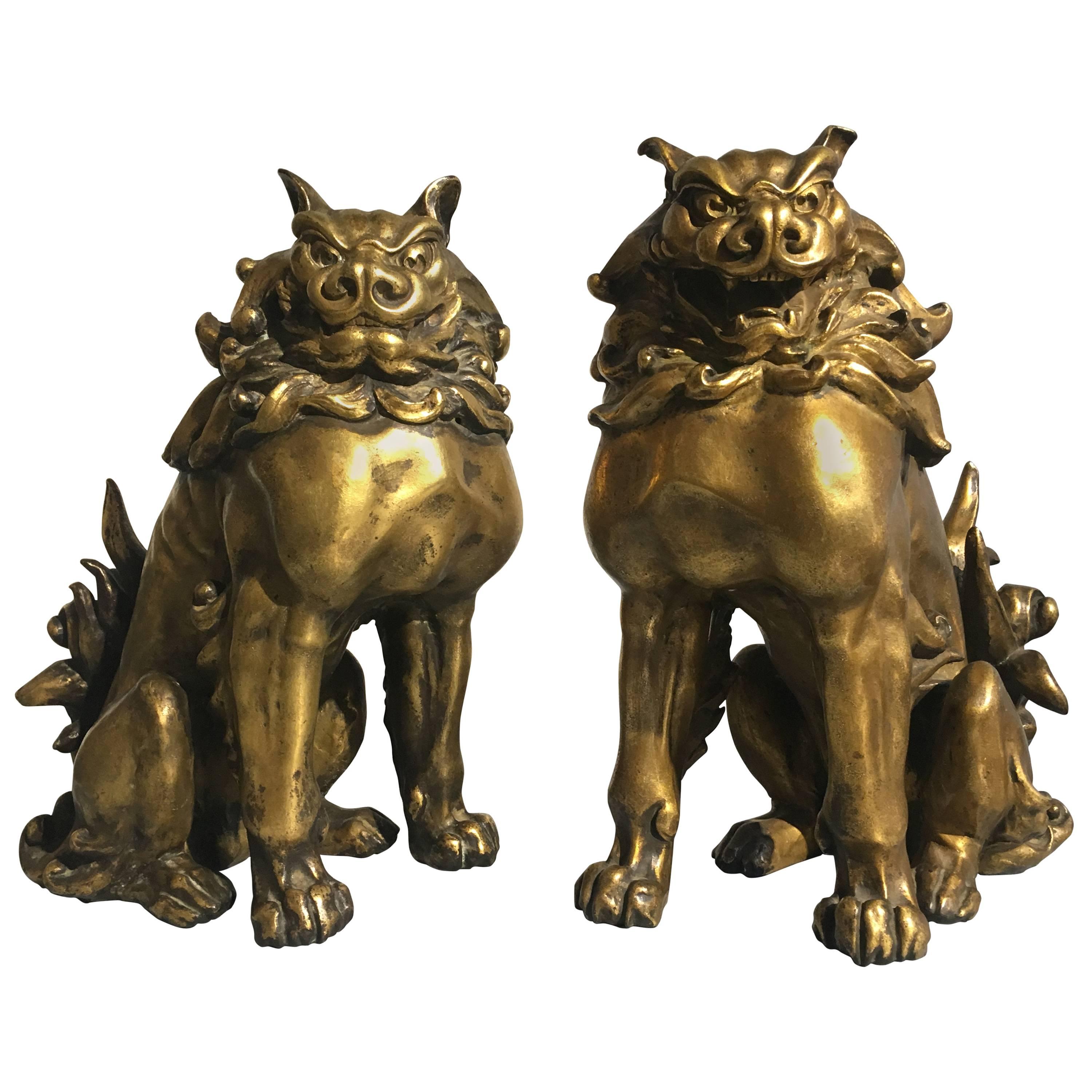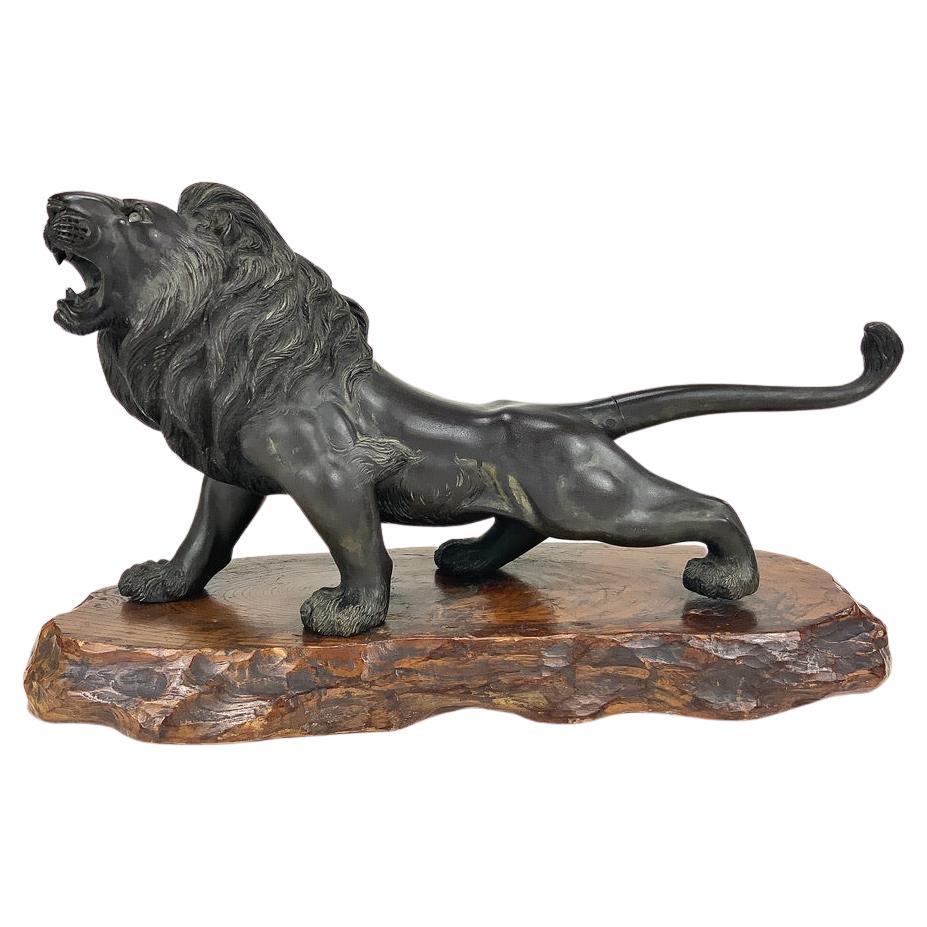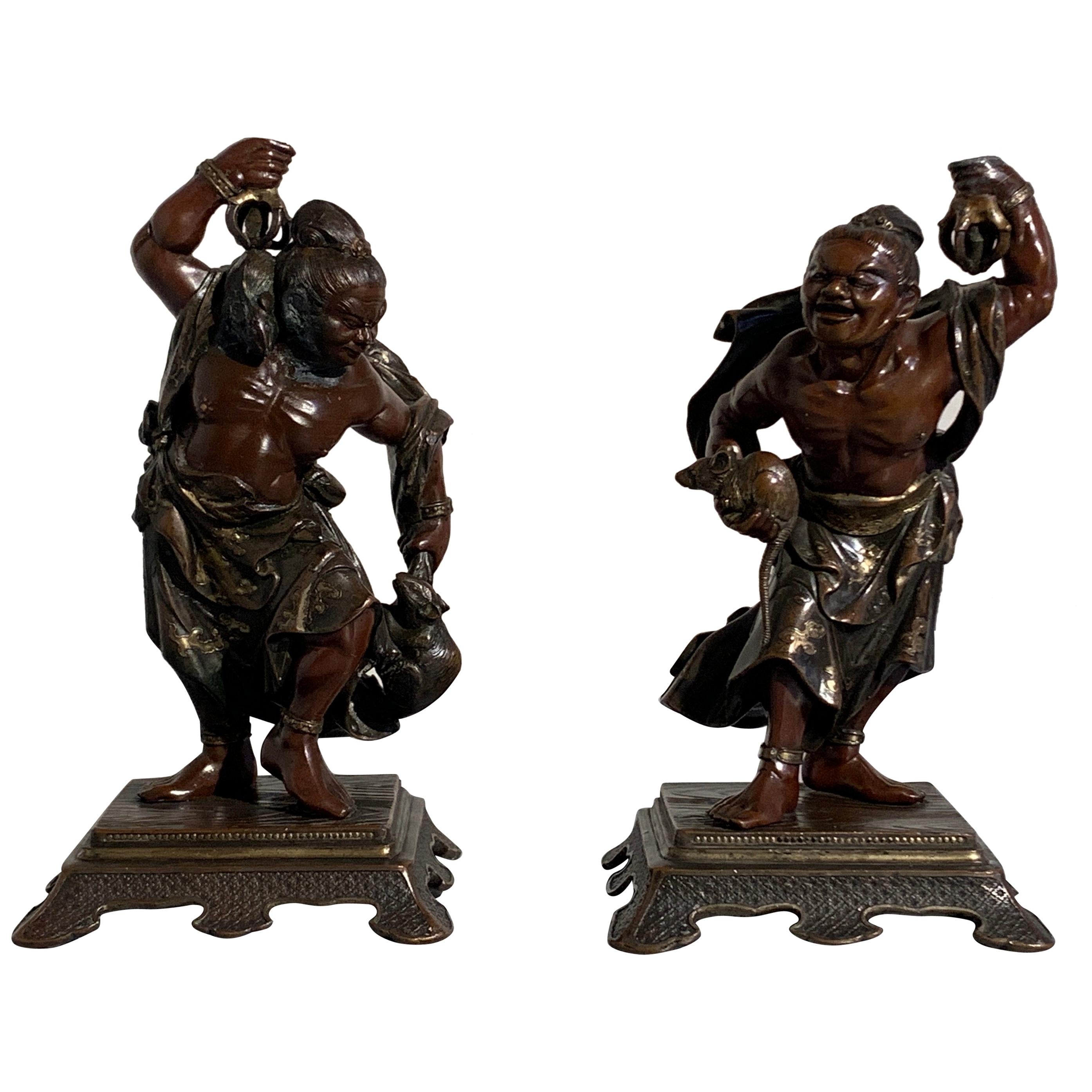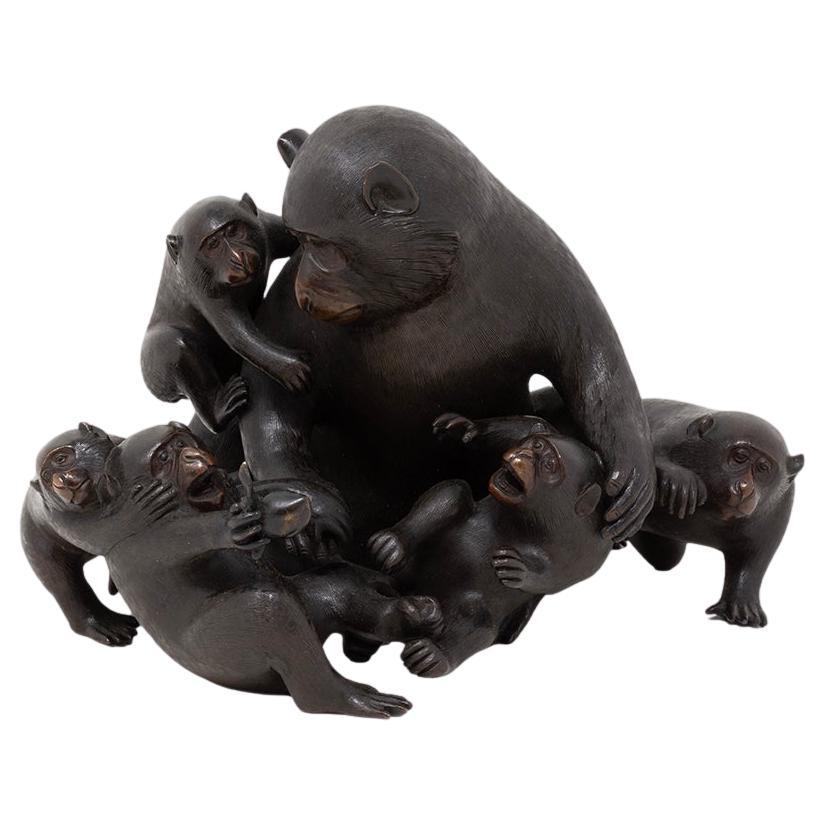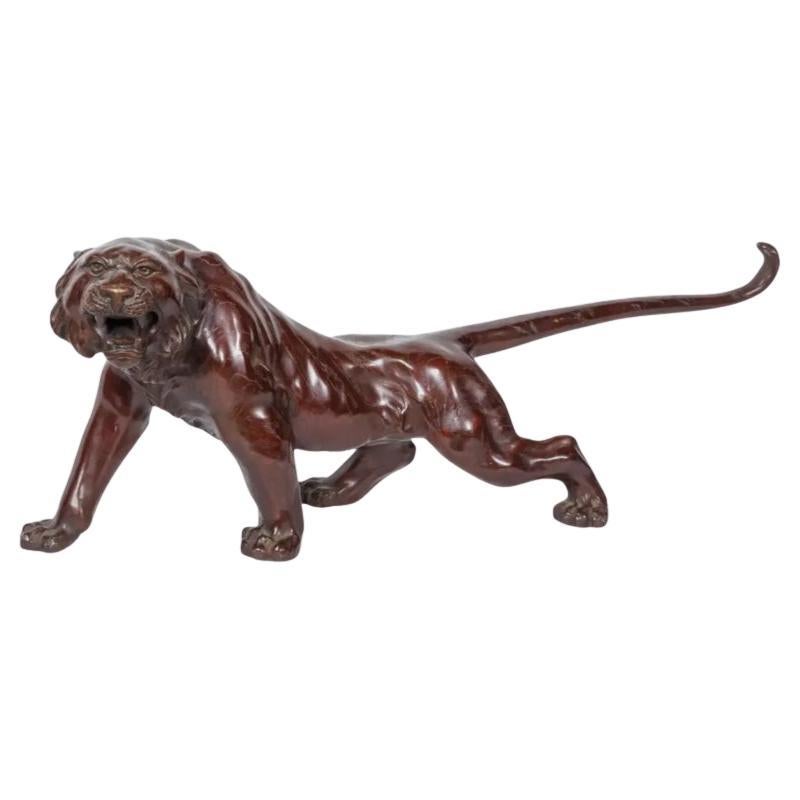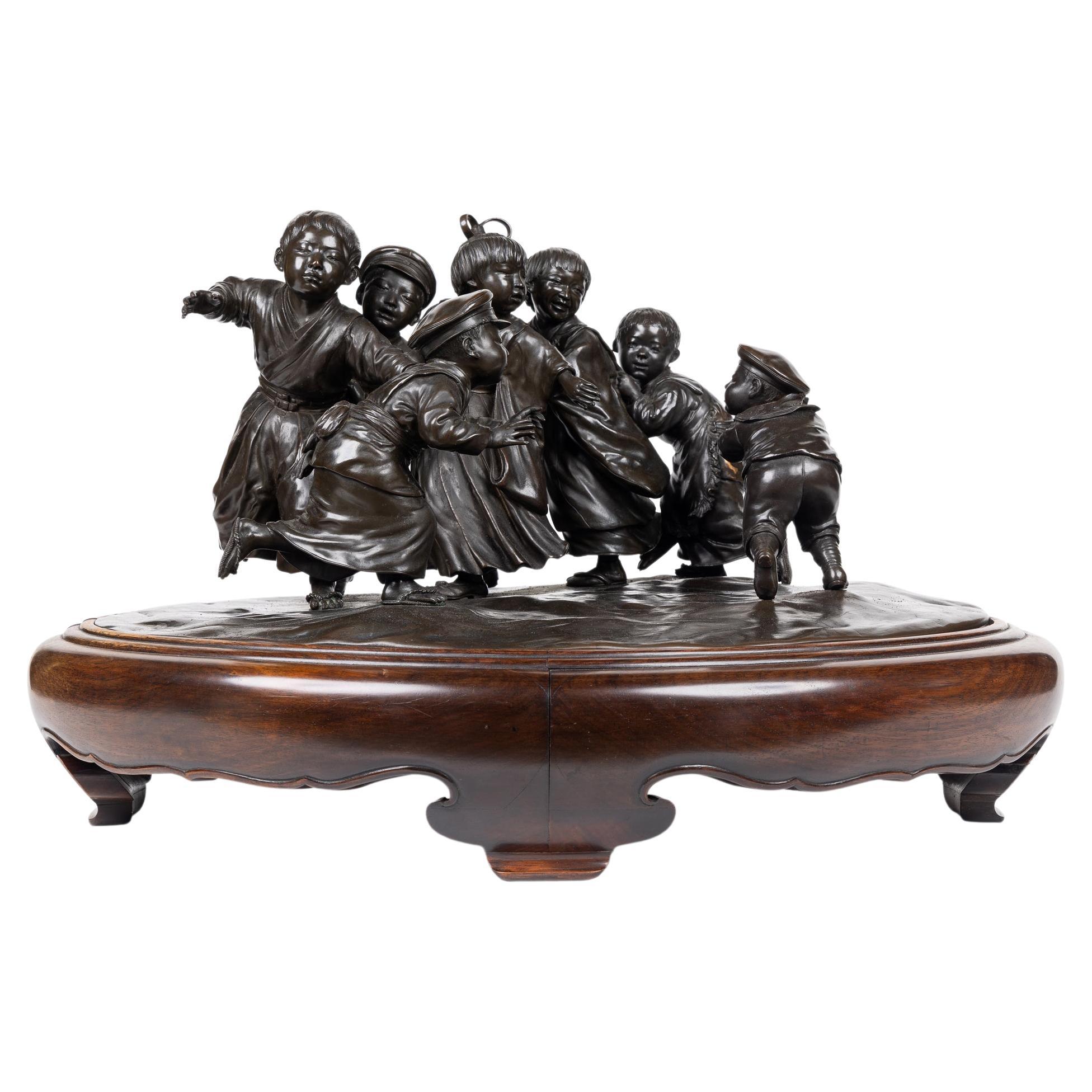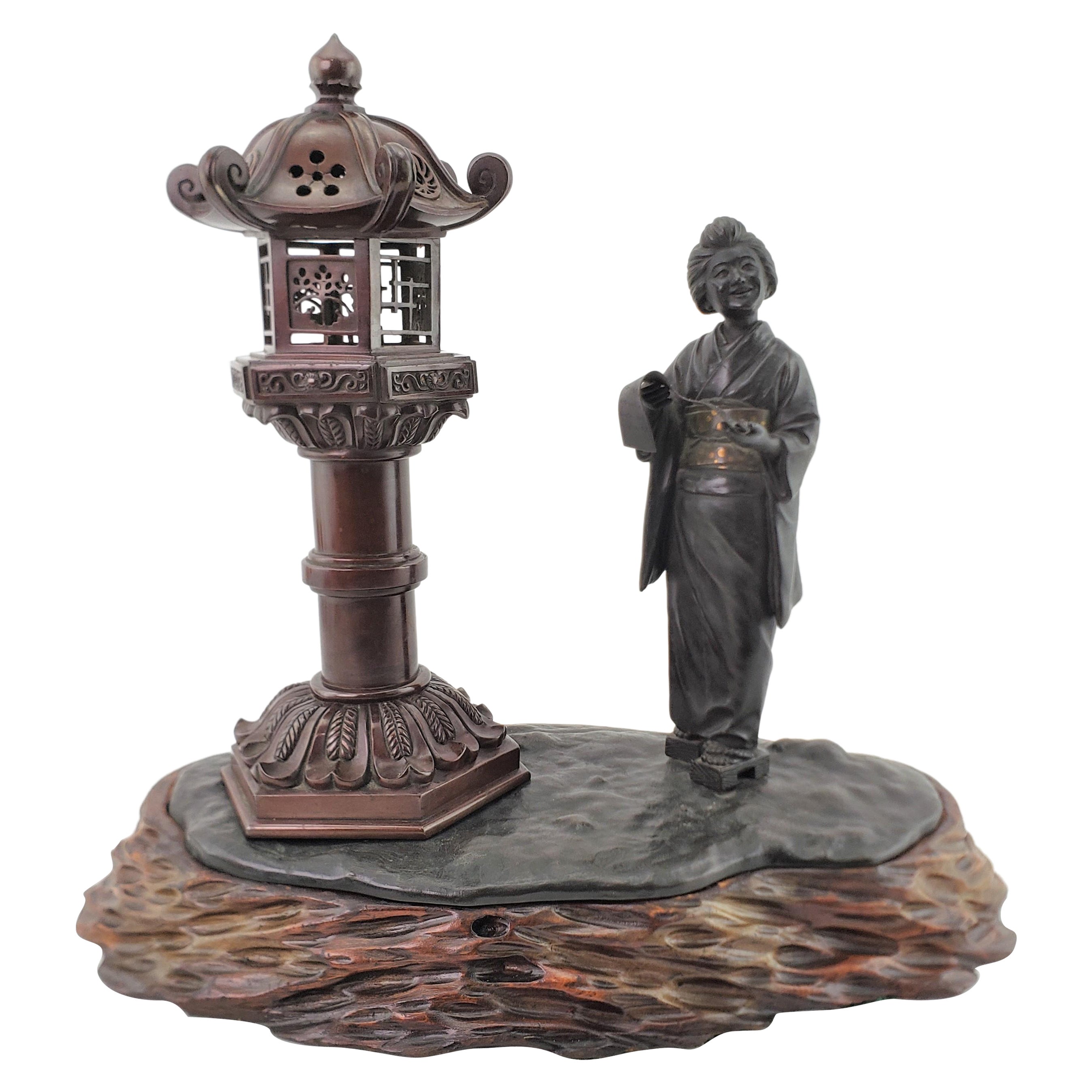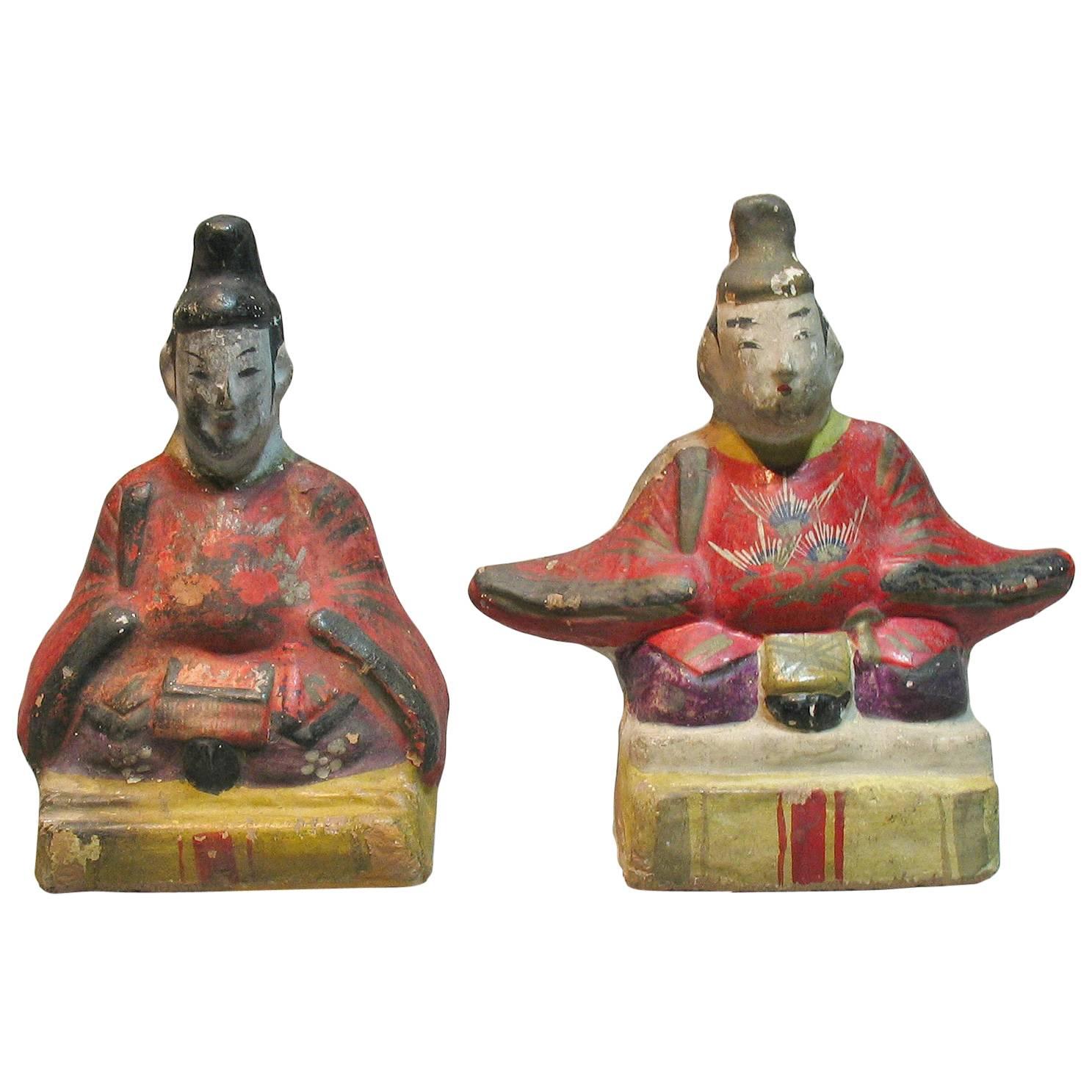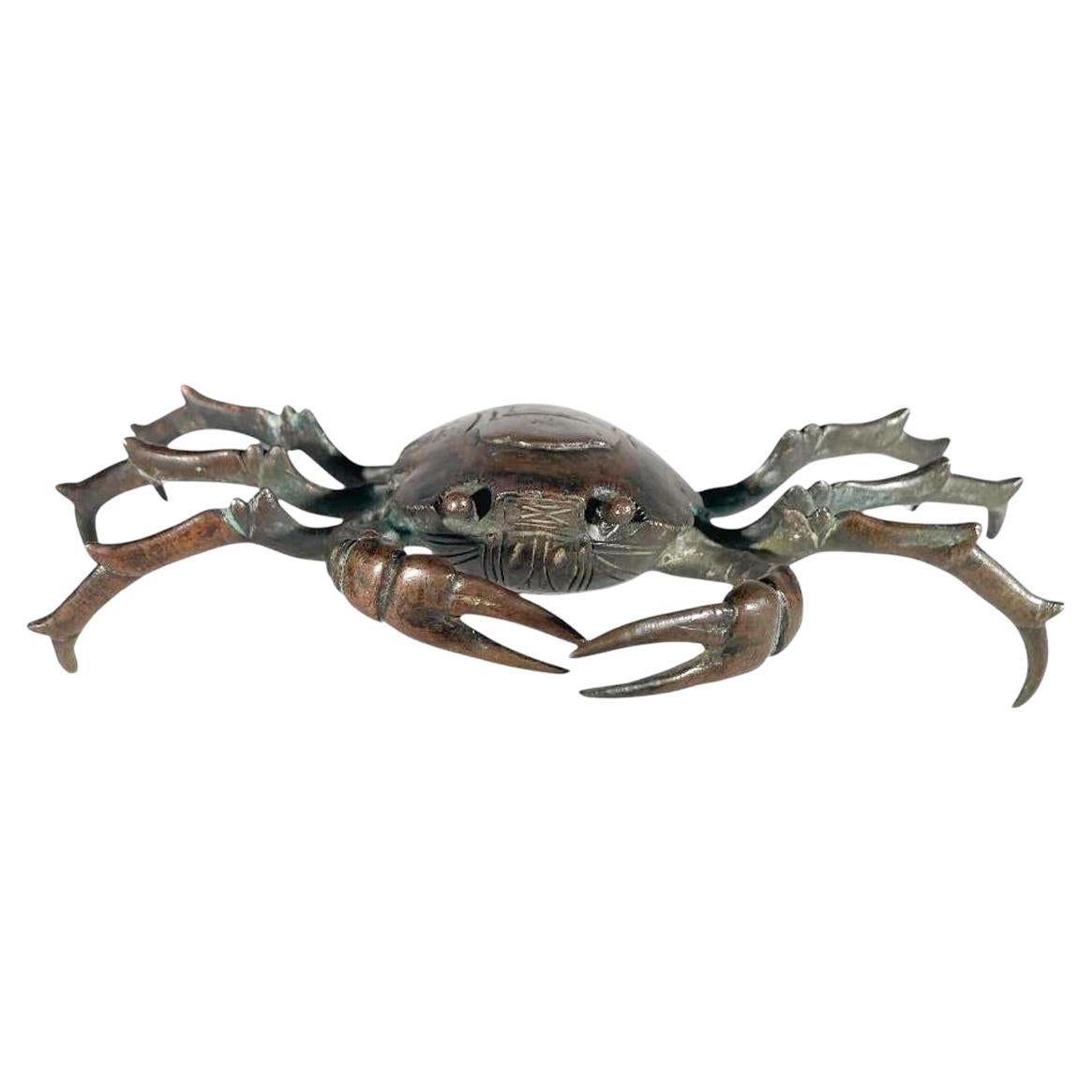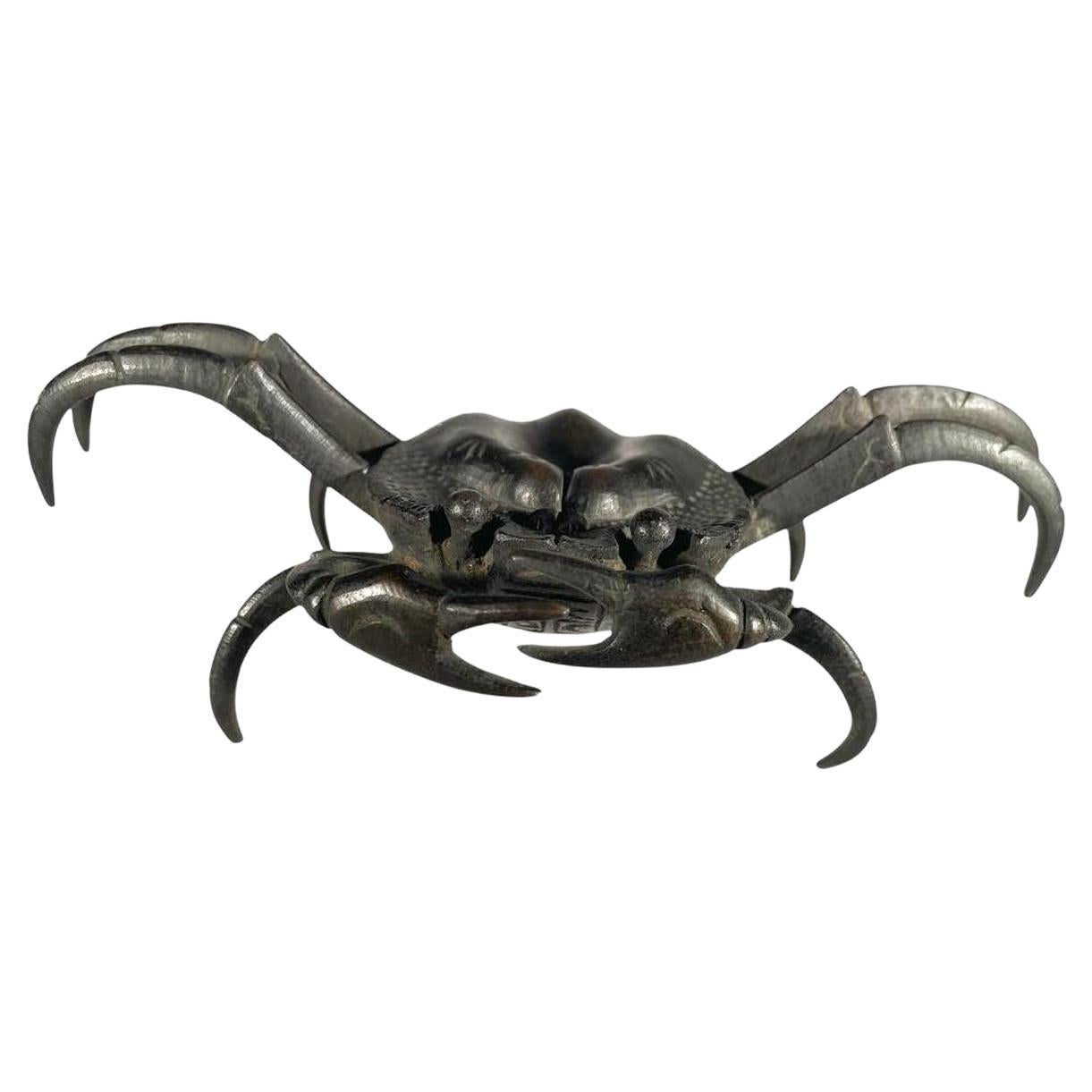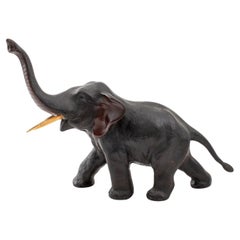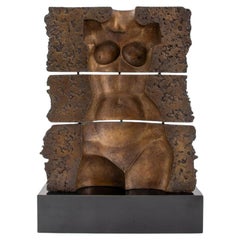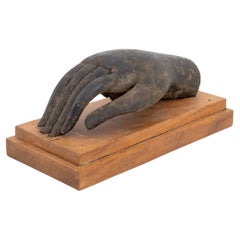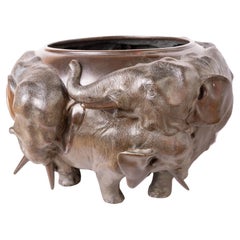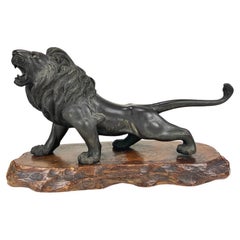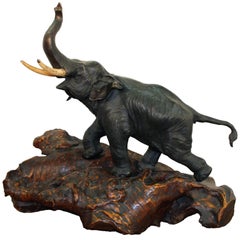
Japanese Meiji Period Bronze Elephant Sculpture on Burlwood Base
View Similar Items
Want more images or videos?
Request additional images or videos from the seller
1 of 8
Japanese Meiji Period Bronze Elephant Sculpture on Burlwood Base
$8,500List Price
About the Item
- Dimensions:Height: 22 in (55.88 cm)Width: 29 in (73.66 cm)Depth: 12 in (30.48 cm)
- Style:Meiji (Of the Period)
- Materials and Techniques:
- Place of Origin:
- Period:
- Date of Manufacture:1880s
- Condition:Wear consistent with age and use. Old repair to the tail; some paint chips to bronze trunk.
- Seller Location:Astoria, NY
- Reference Number:Seller: G5DA - 110139 - 05181stDibs: LU889310605613
About the Seller
4.9
Gold Seller
Premium sellers maintaining a 4.3+ rating and 24-hour response times
1stDibs seller since 2010
2,580 sales on 1stDibs
Typical response time: 3 hours
Authenticity Guarantee
In the unlikely event there’s an issue with an item’s authenticity, contact us within 1 year for a full refund. DetailsMoney-Back Guarantee
If your item is not as described, is damaged in transit, or does not arrive, contact us within 7 days for a full refund. Details24-Hour Cancellation
You have a 24-hour grace period in which to reconsider your purchase, with no questions asked.Vetted Professional Sellers
Our world-class sellers must adhere to strict standards for service and quality, maintaining the integrity of our listings.Price-Match Guarantee
If you find that a seller listed the same item for a lower price elsewhere, we’ll match it.Trusted Global Delivery
Our best-in-class carrier network provides specialized shipping options worldwide, including custom delivery.More From This Seller
View AllElephant Patinated Bronze Sculpture
Located in Astoria, NY
Elephant Patinated Bronze Sculpture, with bone tusks. 8" H x 12" W x 4.5" D. Provenance: From a New York City Collection.
Category
20th Century Modern Animal Sculptures
Materials
Bronze
James L. Clark Silvered Bronze Elephant Sculpture
By James Clark
Located in Astoria, NY
James Lippitt Clark (American, 1883-1969) Silvered Bronze Elephant Sculpture, depicting elephant walking up rocky incline, signed "Jas. L Clark" to...
Category
Mid-20th Century American Modern Animal Sculptures
Materials
Bronze
Subirachs "Untitled" Bronze Sculpture, 1982
Located in Astoria, NY
Subirachs (Josep Maria Subirachs, Spanish, 1927-2014), "Untitled", Bronze Sculpture, numbered and stamped in cast “56/250 RKP Int. Corp c. 1982”. Provenance: From the collection of t...
Category
Late 20th Century Spanish Modern Sculptures and Carvings
Materials
Bronze
$3,250 Sale Price
49% Off
Southeast Asian Bronze Buddha Hand Sculpture
Located in Astoria, NY
Southeast Asian Cast Bronze Buddha Hand Sculpture, on a fitted stepped wood base. Overall: 4.5" H x 10.75" W x 4.75" D. Provenance: From a New Y...
Category
Antique Late 19th Century Asian Sculptures and Carvings
Materials
Bronze
Curtis Jere Figural Bronze on Marble Base
By Curtis Jeré
Located in Astoria, NY
Curtis Jere midcentury figural bronze of a joyful figure jumping upon a molded columnar marble breccia base, circa 1968. Unsigned.
Dimensions: 19.25" H x 7.5" W x 4" D (approx).
De...
Category
Mid-20th Century Mid-Century Modern Figurative Sculptures
Materials
Bronze
Japanese Carved Wood Mask of Tengu
Located in Astoria, NY
Japanese hand carved and painted wood mask of Tengu, the legendary Japanese folk religion creature. Traditionally depicted as a human-bird of prey hy...
Category
Vintage 1920s Japanese Sculptures and Carvings
Materials
Wood
You May Also Like
Japanese Tokyo School Bronze Okimono of a Farmer, Meiji Period
Located in Austin, TX
A very fine and detailed Tokyo School cast bronze okimono (decorative sculpture) of a smiling farmer, Meiji period, late 19th century, Japan.
The e...
Category
Antique Late 19th Century Japanese Meiji Sculptures and Carvings
Materials
Bronze
A Bronze Meiji Period Elephant Jardiniere
Located in London, GB
The richly patinated bronze surface is beautifully chased, clearly stamped to the underside of the base by the highly regarded foundry of Genryusai Seiya, a specialist in bronze obje...
Category
Antique 19th Century Japanese Meiji Sculptures and Carvings
Materials
Bronze
Pair of Japanese Gilt Bronze Komainu by Ishikawa Komei, Meiji Period
Located in Austin, TX
A striking pair of Japanese gilt bronze komainu by the renowned Japanese sculptor, Ishikawa Komei (1852-1913), Meiji period, Japan.
The pair well cast, and robustly modeled. They ar...
Category
Antique Late 19th Century Japanese Meiji Sculptures and Carvings
Materials
Bronze
19th Century Japanese Bronze Lion Meiji Period on Wood Base Signed
Located in Hampstead, QC
This 19th Century bronze male lion is in very good condition. No significant damage to the lion or its lacquered wood base. The left glass eye of the lion is missing. The joint where...
Category
Antique 19th Century Japanese Meiji Sculptures and Carvings
Materials
Bronze
Pair of Japanese Cast Bronze Figures of Niō, Meiji Period, Late 19th Century
Located in Austin, TX
A well cast pair of Japanese mixed metal okimono figures of Buddhist guardians, known as Nio or Dharmapala, protectors of Buddhist faith, Meiji Period, Japan.
The smiling bronze g...
Category
Antique Late 19th Century Japanese Meiji Sculptures and Carvings
Materials
Bronze
Japanese Meiji Period Bronze Monkey Group Sculpture Okimono Shosai
Located in Newark, England
Featuring Seven Japanese Macaques
Form our Japanese collection, we are delighted to offer this Japanese Bronze Monkey Group by Shosai. The Japanese Bronze Group displaying a male father monkey and his infants playing around and being mischievous with Persimmon fruit. The monkeys modelled as Japanese macaque monkeys (snow monkey). The bronze okimono is beautifully patinated with a highly lifelike and naturalistic casting signed to the underside Shosai 正齊鋳. The Bronze group dates to the Meiji Period (1868-1912) circa 1885.
Japanese macaque (snow monkey) is a terrestrial Old World monkey species that is native to Japan. They are known as snow monkeys because some live in areas where snow covers the ground for long periods each year hence their nickname. No other non-human primate lives further north or in a colder climate than the snow monkey. Individuals have brownish grey fur, pinkish-red faces, and short tails. Two subspecies are known and their conservation Status is of least concern. In Japan, the species is known as Nihonzaru ニホンザル, 日本 (Japan/Nihon) and saru 猿 (monkey) to distinguish it from other primates, but the Japanese macaque is the only species of monkey in Japan.
The Japanese macaque features heavily in the religion, folklore, and art of Japan, as well as in proverbs and idiomatic expressions in the Japanese language. They are often seen in paintings, block prints and represented in all manner of carvings from Okimono to netsuke. Many of these art forms reside in the world’s most famous museums and collections, some of the most prominent pieces by artists such as Mori Sosen and Kawanabe Kyosai. In Shinto belief (Japan’s indigenous religion/nature religion) legendary mythical beasts known as raiju sometimes appeared as monkeys and kept Raijin (the god of lightning/storms) company. In another well known tale the three wise monkeys who warn people to “see no evil, hear no evil and speak no evil” can be seen depicted in relief over the door of the famous Tosho-gu shrine in Nikko.
Meiji Period was an era of Japanese history that spanned from 1868 to 1912. It was the first half of the Empire of Japan, when the Japanese people began to build a paradigm of a modern, industrialised nation state and emergent great power, influenced by Western countries and aesthetics. As a result of radically different ideas, the changes to Japan were profound and it affected the social structure, politics, economy, military, and foreign relations across the board. The period corresponded to the reign of Emperor Meiji and was preceded by the Keio era and was succeeded by the Taisho era.
Cultural Art during the Meiji Period was of particular interest to the government and they overhauled the art export market which in turn promoted Japanese arts via various world’s fairs, beginning in Vienna at the world fair in 1873. The government heavily funded the fairs and took an active role organising how Japan’s culture was presented to the world including creating a semi-public company named Kiritsu Kosho Kaisha (First Industrial Manufacturing Company). The Kiritsu Kosho Kaisha was used to promote and commercialise exports of Japanese art and established the Hakurankai Jimukyoku (Exhibition Bureau) to maintain quality standards. For the 1876 Centennial International Exhibition in Philadelphia, the Japanese government created a Centennial Office and sent a special envoy to secure space for the 30,000 items that would be displayed. The Imperial Household also took an active interest in arts and crafts, commissioning works by select artists to be given as gifts for foreign dignitaries further emphasising the high quality and importance of Japanese art. Just before the end of the 19th century in 1890, the Teishitsu Gigeiin (Artist to the Imperial Household) system was created to recognise distinguished artists. These artists were selected for their exceptionally high quality wares and talent in their own industry. Over a period of 54 years Seventy artists were appointed, amongst these were ceramicist Makuzu Kozan and cloisonné enamel artist...
Category
Antique Late 19th Century Japanese Meiji Sculptures and Carvings
Materials
Bronze
Recently Viewed
View AllMore Ways To Browse
Meiji Bronze Animal
Meiji Bronze Animal Sculptures
1889 Trunk
Japanese Burl Wood
Meiji Bronze Elephant
Burlwood Sculpture
Italian Fish
Vintage Glass Animals
Wood Sculpture Of Animals
Small Animal Sculpture
Vintage Elephant
The Owl
Mid Century Modern Brass Sculpture
Decorative Cast Iron
Art Glass Birds
Black Head Sculpture
Vintage Murano Glass Sculpture
Horse Heads
